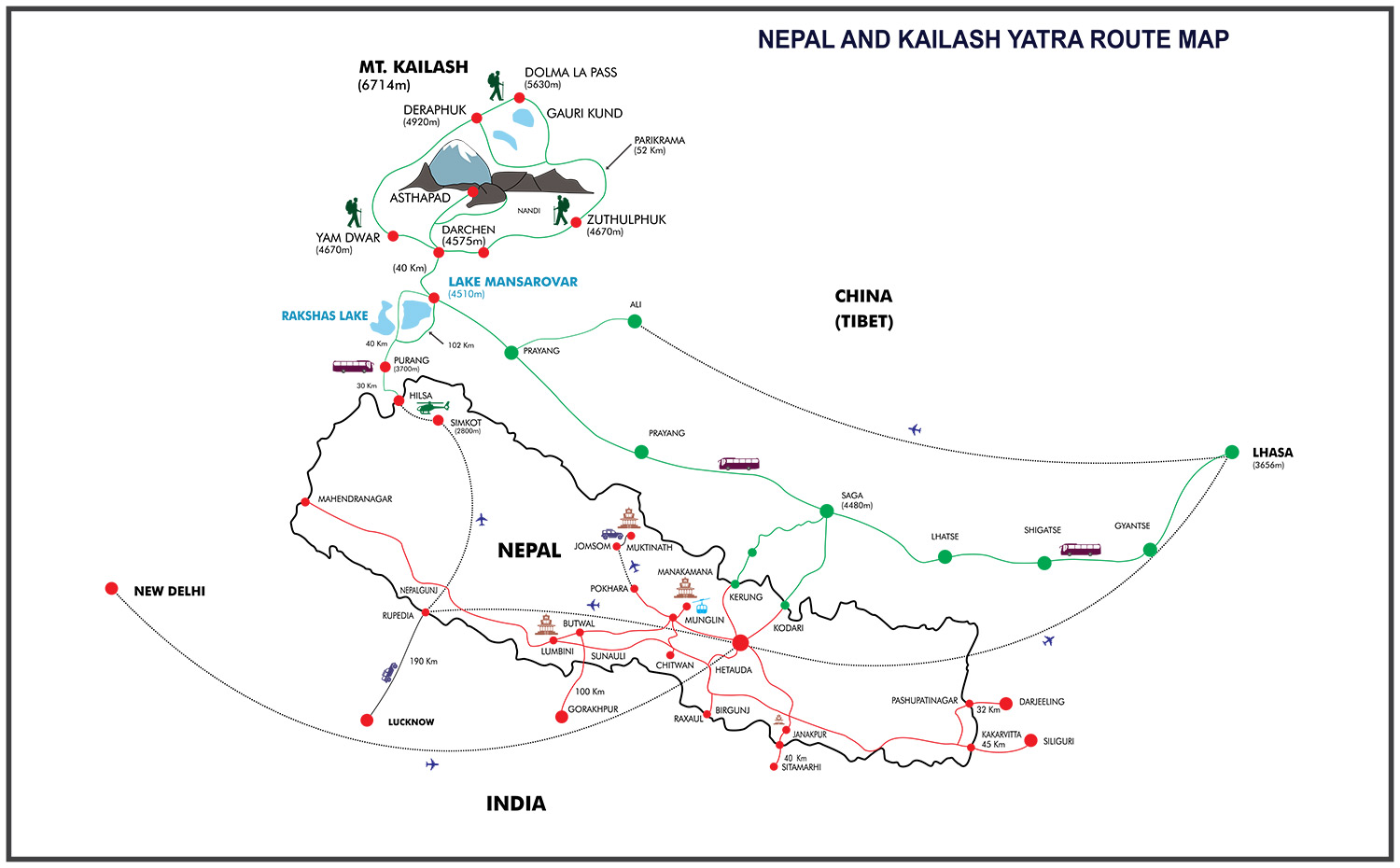Routes & Risk Management
1) Why in the News
Periodic political protests, strikes, and administrative disruptions in Nepal affected travel to Kailash–Mansarovar, especially routes through Kathmandu–Tibet or Simikot–Hilsa. This raised concerns about pilgrim safety, logistics, and consular support.
- Pilgrims faced flight cancellations, border delays, and permit uncertainties in 2024–2025.
- Monsoon-related landslides and road washouts added seasonal risk.
- India reviewed advisories and urged route and operator diligence.
- Tour operators reworked itineraries and insurance to manage sudden changes.
2) What Changed & India Angle (2024–2025)
Operational conditions in Nepal turned volatile, with short-notice bandhs (shutdowns) and administrative pauses. India’s focus remained on citizen safety, reliable routing, and information flow.
- Flights: Occasional disruptions at Kathmandu/Nepalgunj/Simikot affected onward connections.
- Borders: At Hilsa and Rasuwagadhi–Kerung, clearance times fluctuated; groups needed extra buffer days.
- Permits & health: Authorities reinforced checks on travel insurance, fitness certificates, and acclimatisation plans.
- India’s response: Updated travel advisories, embassy helplines, and coordination with state pilgrimage boards.
3) Core Risks & Preparedness for Pilgrims
High altitude, shifting ground conditions, and political calls for protest make this a non-routine journey. A strong plan B is essential.
- Safety first: Screen for heart/lung illness; carry prescribed altitude medicines; keep two buffer days.
- Operator due diligence: Choose firms with local ground staff, backup charter/road options, and refund policies in writing.
- Documents & money: Multiple ID copies, permits, emergency cash, and international health insurance that covers air evacuation.
- Monsoon watch: Avoid risky windows; track landslide alerts and keep a daylight-only travel rule.
Box — Route Snapshot
| Route | Speed | Strength | Main Vulnerability | When to Prefer |
|---|---|---|---|---|
| Kathmandu → Kerung (road) → Tibet | Moderate | Fewer flights; steady when borders open | Border clearance variability | When road conditions are stable and permits are clear |
| Nepalgunj → Simikot (flight) → Hilsa (helicopter) | Fast (weather-permitting) | Quick access in good weather | Highly weather-sensitive (wind/cloud ceilings) | In dry windows with flexible buffer days |
| Indian land route (via Uttarakhand) | Variable | Domestic control over logistics | Road/permit status and monsoon disruptions | When domestic advisories and roads are favourable |
4) Way Forward & Policy Steps (12-Month View)
Make the yatra predictable and safe by combining clear information, health discipline, and redundant logistics.
- Information: Real-time advisory dashboard (weather, border wait times, protest alerts).
- Health: Mandatory acclimatisation nights, oxygen checks at camps, and evacuation tie-ups.
- Logistics: Pre-approved diversion plans (road vs helicopter) and staggered departures.
- Coordination: Regular India–Nepal–operator calls before peak season; publish standard contracts with refund/rollover clauses.
One-line Wrap: Plan for altitude, politics, and weather — choose resilient routes and operators, not just dates.
Prelims Practice
Q1. With reference to the Kailash–Mansarovar Yatra via Nepal, which of the following is most critical for risk reduction?
(b) Keeping two buffer days and an evacuation-capable insurance
(c) Carrying only digital copies of ID and permits
(d) Skipping acclimatisation to finish earlyAnswer: (b) — Buffer days and proper insurance are core safeguards.
Q2. Consider the following pairs (route feature → main vulnerability):
2. Kerung road crossing → Border clearance variability
3. High-altitude camps → Acute Mountain SicknessWhich of the pairs given above is/are correctly matched?
(a) 1 and 2 only (b) 2 and 3 only (c) 1 and 3 only (d) 1, 2 and 3Answer: (d) — All three vulnerabilities are correctly matched.
Start Yours at Ajmal IAS – with Mentorship StrategyDisciplineClarityResults that Drives Success
Your dream deserves this moment — begin it here.




